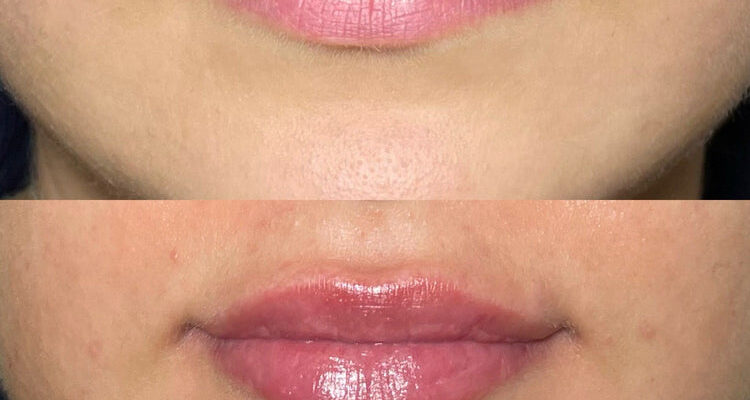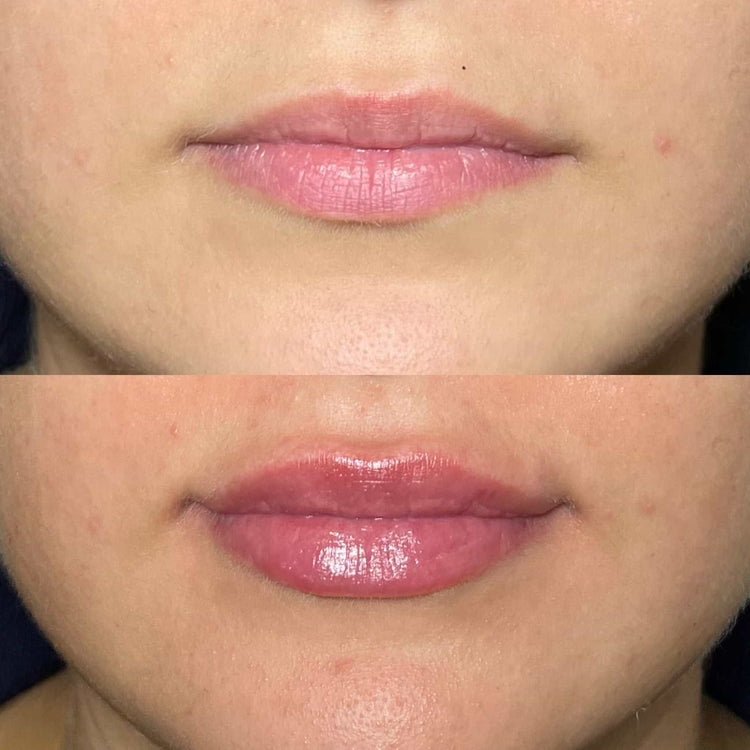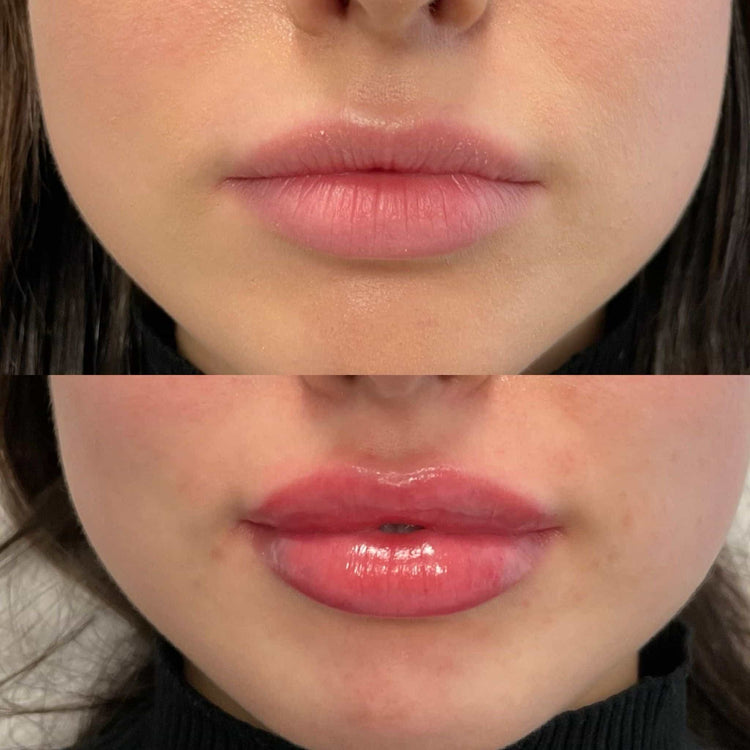Do Dermal Fillers Look Better Over Time? Myths And Facts
May 7, 2025

The Science Behind Dermal Fillers

Dermal fillers have become increasingly popular for addressing signs of aging, but understanding how they work can help you make informed decisions about your cosmetic treatments. These injectable substances, typically composed of hyaluronic acid or other synthetic materials, are designed to add volume and fullness to specific areas of the face.
How Fillers Work
Dermal fillers work by strategically injecting gel-like substances beneath the skin’s surface. These substances mimic the body’s natural hyaluronic acid, a substance that plumps up tissues and keeps them hydrated. As we age, our bodies produce less hyaluronic acid, leading to wrinkles, folds, and loss of facial volume.
Fillers effectively restore lost volume by filling in these areas, smoothing out wrinkles, and enhancing facial contours. Different types of fillers are available, each formulated for specific purposes. Some are designed for plumping lips, while others are better suited for addressing deep wrinkles or restoring cheekbones.
Types of Fillers and Their Longevity
Dermal fillers work by strategically injecting gel-like substances beneath the skin’s surface. These substances mimic the body’s natural hyaluronic acid, a substance that plumps up tissues and keeps them hydrated. As we age, our bodies produce less hyaluronic acid, leading to wrinkles, folds, and loss of facial volume.
Fillers effectively restore lost volume by filling in these areas, smoothing out wrinkles, and enhancing facial contours. Different types of fillers are available, each formulated for specific purposes. Some are designed for plumping lips, while others are better suited for addressing deep wrinkles or restoring cheekbones.
Hyaluronic acid fillers, the most common type, are temporary and gradually degrade over time, typically lasting six months to a year. Other types of fillers include poly-L-lactic acid (PLLA), which stimulates collagen production for longer-lasting results (up to two years), and calcium hydroxylapatite, also known as Radiesse, which provides both immediate volume and gradual collagen stimulation (up to one year).
The longevity of dermal fillers can vary depending on factors such as the type of filler used, the area treated, individual metabolism, and lifestyle habits.
Myths About Filler Results Over Time

There are many myths surrounding how dermal fillers look over time. Some believe that they’ll permanently alter your appearance, while others think the results will fade quickly. Understanding the facts about filler longevity can help you make informed decisions about your cosmetic treatments.
Myth: Fillers Look Unnatural After Years of Use
One common myth is that fillers look unnatural after years of use. This misconception likely stems from outdated filler technology and improper application techniques. Modern fillers are designed to be subtle and integrate seamlessly with facial structures, producing natural-looking results.
Moreover, the gradual degradation of hyaluronic acid fillers allows for adjustments over time. As a filler breaks down, your face naturally softens, preventing any drastic or unnatural transformations.
Myth: Fillers “Freeze” Facial Features
Another myth is that fillers “freeze” facial features, making them appear stiff and expressionless. This is simply not true. Fillers primarily enhance volume and smoothness, they don’t immobilize facial muscles.
Facial expressions are still possible with fillers, as the underlying muscle movements remain unaffected. However, it’s essential to choose a skilled injector who understands how to strategically place filler to maintain natural movement and expression.
Myth: You’ll Eventually Need More Frequent Treatments
You’ll Eventually Need More Frequent Treatments
While dermal fillers are temporary, the frequency of treatments can vary greatly.
As mentioned earlier, hyaluronic acid fillers typically last six months to a year. However, some individuals might notice subtle changes or desired volume diminishing sooner, requiring top-up treatments every four to six months. This is dependent on factors like facial movement, metabolism, and lifestyle.
The beauty of dermal fillers lies in their adjustable nature. With regular maintenance treatments, you can maintain your desired look for as long as you wish.
Facts About Long-Term Filler Effects
Dermal fillers have become increasingly popular for addressing signs of aging, but understanding how they work can help you make informed decisions about your cosmetic treatments. These injectable substances, typically composed of hyaluronic acid or other synthetic materials, are designed to add volume and fullness to specific areas of the face.
One common misconception is that dermal fillers lead to unnatural-looking results over time. Modern fillers are formulated to integrate seamlessly with facial structures, producing subtle and natural enhancements.
The Gradual Nature of Dermal Filler Absorption
The gradual nature of dermal filler absorption is a key factor in achieving long-lasting, natural-looking results. Hyaluronic acid fillers, the most common type, gradually break down over time, typically lasting six months to a year. This means your face softens naturally as the filler dissolves, preventing any drastic or unnatural transformations.
As hyaluronic acid degrades, your facial contours naturally evolve, allowing for subtle adjustments and refinements over time. You may opt for top-up treatments every four to six months to maintain your desired look.
The gradual absorption process also contributes to a more natural and dynamic appearance. Facial expressions remain unaffected as the underlying muscles are not immobilized by the filler.
Maintaining Results With Touch-Up Treatments
Dermal fillers are designed to be temporary, meaning they gradually break down over time. This gradual degradation is important for maintaining a natural look. As a filler breaks down, your face naturally softens, preventing any drastic or unnatural transformations.
The longevity of dermal fillers can vary depending on factors like the type of filler used, individual metabolism, and lifestyle habits. Hyaluronic acid fillers, the most common type, typically last six months to a year.
To maintain results with hyaluronic acid fillers, touch-up treatments are recommended every four to six months as needed. This allows for adjustments and ensures your desired look is maintained.
Regular maintenance treatments ensure you continue to enjoy the benefits of dermal fillers while preventing any unnatural looking transformations

The Importance of Choosing a Qualified Practitioner
One crucial aspect of achieving optimal results with dermal fillers is choosing a qualified practitioner. An experienced injector possesses in-depth knowledge of facial anatomy, different filler types, and the latest techniques for safe and effective application.
A skilled injector will carefully assess your individual needs and goals to determine the most suitable filler type and placement strategy. They will also discuss realistic expectations and potential side effects, ensuring you make informed decisions about your treatment.
Choosing a qualified practitioner minimizes risks and maximizes the likelihood of achieving natural-looking, long-lasting results.
Enquire about restoring youthful features with dermal fillers at It’s Me & You Clinic
- Gummy Smile Treatment – Gum Contouring Near Cobham, Surrey - September 27, 2025
- Filler For Defined Jaw In Farnham, Surrey - September 24, 2025
- Forehead Frown Lines Treatment Near Ottershaw, Surrey - September 23, 2025
